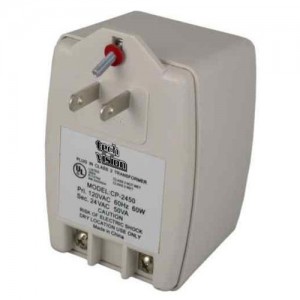 There are several different types of CCTV (Closed Circuit TeleVision) power supplies. Currently in the digital video security industry there are two basic types of power that are used; 1.) 24 Vac and 2.) 12 v DC. Most digital video cameras utilize a low-voltage power supply so there are not as many potentially dangerous factors to be concerned about as there is if they used full household Alternating Current (AC).
There are several different types of CCTV (Closed Circuit TeleVision) power supplies. Currently in the digital video security industry there are two basic types of power that are used; 1.) 24 Vac and 2.) 12 v DC. Most digital video cameras utilize a low-voltage power supply so there are not as many potentially dangerous factors to be concerned about as there is if they used full household Alternating Current (AC).
Even though in the security camera industry today we basically only have two power choices from which to choose, there are a few options for power that will greatly affect your decision in the buying process. With video being integrated into many aspects of our daily lives such as phones, access control, and even mobile usage it is easy to get confused about your power source. Traditionally, CCTV cameras were 24V ac, but about 15 years ago 12V DC cameras started to become popular due to their low cost. Currently, dual voltage cameras are replacing 24V AC only cameras, helping to alleviate the stress of worrying about whether or not your power source is compatible for your camera.
One important note so as not to cause confusion: Using either of the two doesn’t affect the video transmission, only the power. (i.e. Bumping up the power on the power supply will not improve your transmission. Transmission of the digital video signal from the camera to the DVR is an entirely different issue.
You can run 500 feet of video line using either voltage easily if the camera is powered at the source. However, when using this distance for power as well, you might not be able to get the proper amount of power to your camera when using 12V DC with a camera that has a large current.
BY the nature of physics and the material, DC voltage sent a long distance becomes susceptible to degradation or voltage drops which are directly proportional to the distance the DC voltage is sent. 24V ac on the other hand is not affected (at least for our applications) like DC voltage is.
A camera’s power consumption is usually referred to in milliamps (mA) or amperage (A) if it is large enough. A camera’s consumption is generally around 200-400mA. Things like mechanical filters, infrared LEDs, and internal heaters will jump this number up considerably. Trying to power a 1.2A camera with 12V DC with low amperage over a long distance or with devices that require a high amperage is unfeasible as there will be too much total resistance in the long cable run that adds up to a substantial voltage drop resulting in camera failure.
A quick test to see if you’re having problems due to voltage drops is simply to take a volt meter and measure the voltage at the camera under load (while it’s connected). A common problem attributed to voltage drop is where the camera works fine when there is low consumption but at night, when the IR LEDs turn on, it stops working completely. Problems can also include hum bars, video distortion, and other symptoms which are often mistaken as a bad camera. The solution is to go with a 24V AC camera which minimizes the voltage drop problem by using higher AC voltage.
One possible cure, as noted at the beginning, is to purchase dual voltage cameras. These cameras can be powered with either voltage by simply hooking it up to that power source. No adjustments for power or polarity are necessary as the camera itself automatically accepts whichever form you are using. You only need to consider these options when you are trying to set up a camera over 300’ and with a draw of 300mA or more.
Keeping all of this in mind, it is clear to see that you will want to use AC power whenever you have a long distance to travel or if you are using a smaller diameter wire that may not allow your 12V DC camera to get the proper current it needs to work. Also remember that in the U.S. the wire gauge number represents a larger piece of wire as the gauge number decreases. The easiest and best solution is to look for dual voltage cameras so you no longer have to worry about it.
